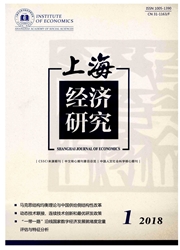

 中文摘要:
中文摘要:
经济活动的空间聚集以及地区经济增长非均衡性是我国的一个经济现实状况。为探求产业空间聚集的形成机制以及对地区差距和经济增长的微观效应,本文以新经济地理学和内生经济增长为理论基础,构建局部溢出模型和空间计量模型,分析产业地理集中的需求关联效应、溢出效应与拥挤效应对地区协调发展的作用机制。结果发现需求关联效应和溢出效应为聚集力,拥挤效应为维持对称均衡的分散力,同时,溢出效应也可成为促进经济分散的力量;聚集力和分散力的对比呈阶段性变化,初始阶段聚集力大于分散力,产业地理集中与经济增长和地区经济差距之间存在"倒U型"的关系;人力资本溢出效应的存在有利于缩小地区差距。
 英文摘要:
英文摘要:
Spatial agglomeration of economic activities and the resulting differences in regional economic growth is an economic reality of our country. In order to find the form mechanism and micro effects of industrial spatial distribution on regional disparities and economic growth, this paper, based on this new economic geography and endogenous economic growth theory, builds a local spillover model and spatial econometric model to analyze demand ralated effects, spillover effects and crowding efi~cts of industry geographic concentration on regional coordinated development. The results show that demand ralated effects and spillover effects are gathered force, and crowding effects is dispersion force to maintain balance symmetric. At the same time, spillover effects can also be a force for economic dispersion. Comparison of gathered power and dispersion power phasically changes, and gathered power of the initial stage is greater than the dispersion power, so there is " inverted U" relationship among industry agglomeration, economic development and regional gap. Spillover effects of human capital are conducive to narrow the regional gap.
 同期刊论文项目
同期刊论文项目
 同项目期刊论文
同项目期刊论文
 期刊信息
期刊信息
